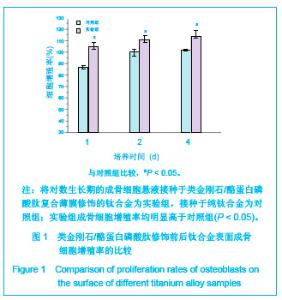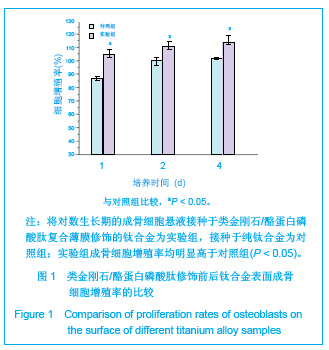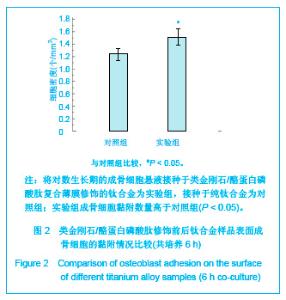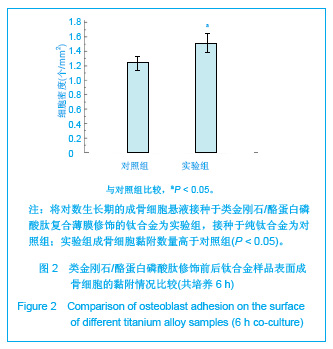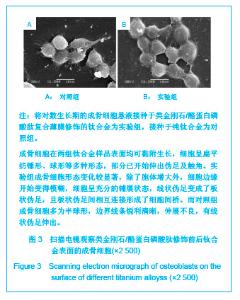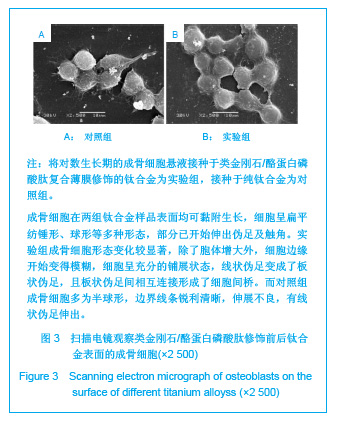| [1] Mändl S,Sader R,Thorwarth G,et al.Investigation on plasma immersion ion implantation treated medical implants .Biomol Eng.2002;19 (2-6):129-132.[2] Ratner BD,Hoffman AS,Schoen FJ,et al. Biomaterials Science. An Introduction to Materials in Medicine. San Diego, Calif: Academic Press, 1996:335.[3] Goodman SB,Song Y,Yoo JY,et al. Local infusion of FGF-2 enhances bone ingrowth in rabbit chambers in the presence of polyethylene particles. J Biomed Mater Res A. 2003;65(4): 454-461.[4] Kobayashi A,Bonfield W,Kadoya Y,et al.The size and shape of particulate polyethylene wear debris in total joint replacements.Proc Inst Mech Eng H. 1997;211(1):11-15.[5] Dearnaley G, Arps JH. Biomedical applications of diamond-like carbon coatings: a review. Surf Coat Technol. 2005;200(7): 2518-2524.[6] Vanhulsel A,Velasco F,Jacobs R,et al.DLC solid lubricant coatings on ball bearings for space applications. Tribol Int.2007;40(7): 1186-1194.[7] Podgornik B,Vizintin J.Tribologically activated surface layers in lubricated DLC contacts.Surf Interface Anal.2008;40(3-4): 867-870.[8] Allen M,Myer B,Rushton N.In vitro and In vivo investigations into the biocompatibility of diamond-like carbon (DLC) coatings for orthopedic applications. J Biomed Mater Res. 2001;58(3): 319-328.[9] Jiang SW,Yin GF,Zheng CQ,et al. Mocha Xuebao. 2001; 21(3): 167-171. 蒋书文,尹光福,郑昌琼,等. 钛合金表面类金刚石碳梯度薄膜的摩擦磨损性能研究[J]. 摩擦学报,2001,21(3): 167-171.[10] Zhang Li, Yin GF,Zheng CQ,et al.Gongneng Cailiao. 2003; 34 (3): 278-280. 张利, 尹光福, 郑昌琼,等. 钛合金基类金刚石梯度薄膜的生物摩擦学性能评价[J]. 功能材料, 2003,34 (3): 278-280.[11] Choy KL, Felix E. Functionallygradeddiamond- likecarboncoatings on metallic substrates.Mat Sci Eng A. 2000;278 (1-2): 162-169.[12] Lu L, Jones MW, Wu RL. Diamond-like carbon as biological compatible material for cell culture and medical application. Biomed Mater Eng. 1993;3(4): 223-228.[13] Nakamura T, Ohana T,Suzuki M,et al.Chemical modification of DLC films with perfluorooctyl functionality. Diamond Relat Mater. 2005;14 (3-7): 1019-1022.[14] Hauert R.A review of modified DLC coatings for biological applications. Diamond Relat Mater. 2003;12(3-7): 583-589.[15] Nakamura T,Ohana T,Suzuki M,et al.Surface modification of diamond-like carbon films with perfluorooctyl functionalities and their surface properties. Surf Sci. 2005;580(1-3): 101-106.[16] Jones MI,McColl IR,Grant DM,et al.Protein adsorption and platelet attachment and activation, on TiN, TiC, and DLC coatings on titanium for cardiovascular applications. J Biomed Mater Res.2000;52(2): 413-421.[17] Choi J,Ishida T,Kato T,et al.Self-assembled monolayer on diamond-like carbon surface: formation and friction measurements. Tribol Int. 2003;36 (4): 285-290.[18] Wu XM,Itoh N,Taniguchi T,et al. Requirement of calcium and phosphate ions in expression of sodium-dependent vitamin C transporter 2 and osteopontin in MC3T3-E1 osteoblastic cells. Biochim Biophys Acta. 2003; 1641(1): 65-70.[19] Zhuo LL, Zhang CL, Gu JH,et al. Zhongguo Shouyi Xuebao. 2009; 29(6): 769-773. 卓丽玲,张春岭,顾建红,等. 钙对体外培养大鼠成骨细胞增殖分化及细胞周期的影响[J].中国兽医学报,2009,29(6): 769-773.[20] Gu WW, Pei YY. Zhongguo Linchuang Yaoxue Zazhi. 2000; 9(1): 58-60. 顾王文, 裴元英. 酪蛋白磷酸肽促钙吸收的作用及研究概况[J].中国临床药学杂志,2000,9(1): 58-60.[21] Hansen M,Sandstrom B,Jensen M,et al. Effect of casein phosphopeptides on zinc and calcium absorption from bread meals. Trace Elem Med Biol.1997; 11 (3): 143-149.[22] Matsui T,Yano H, Awano T,et al.The influences of casein phosphopeptides on metabolism of ectopic bone induced by decalcified bone matrix implantation in rats. J Nutr Sci Vitaminol (Tokyo). 1994; 40(2): 137-145.[23] Ciapetti G,Cenni E,Pratelli L,et al.Invitro evaluation of cell biomaterial interaction by MTT assay. Biomaterials. 1993; 14(5): 359-364. |
